After the light hearted look at history at Warwick castle, my next outing was to Stokes Field, just South of Newark and only ten minutes up the A46 from my house! It was here that the last battle of the War of the Roses was fought, on 16th June 1487 some 2 years after Henry Tudors earlier victory at Bosworth Field. The occasion was the 530th anniversary of the battle and the event was hosted by Foundry Miniatures, who are themselves based at East Stoke village. The battle is somewhat of a footnote to the Wars of the Roses but was a major engagement, possibly involving more participants than Bosworth. The casualty count was certainly higher, due to the fierce, drawn out close combat and the ensuing rout where most of the Yorkist elite were slain. If you are unfamiliar with the battle, it is worth checking out the Wikipedia article here:
THE BATTLE OF STOKES FIELD
The Battlefield tour was led by Mike Ingram, an extremely knowledgeable and affable guide. Mike explained the background to the battle, who was involved and why. I was particularly impressed that Mike was happy to give more than one possible version of what had happened and why this should be. Events that occurred 530 years ago are never going to be completely documented and so I quite like the uncertainty being made clear.
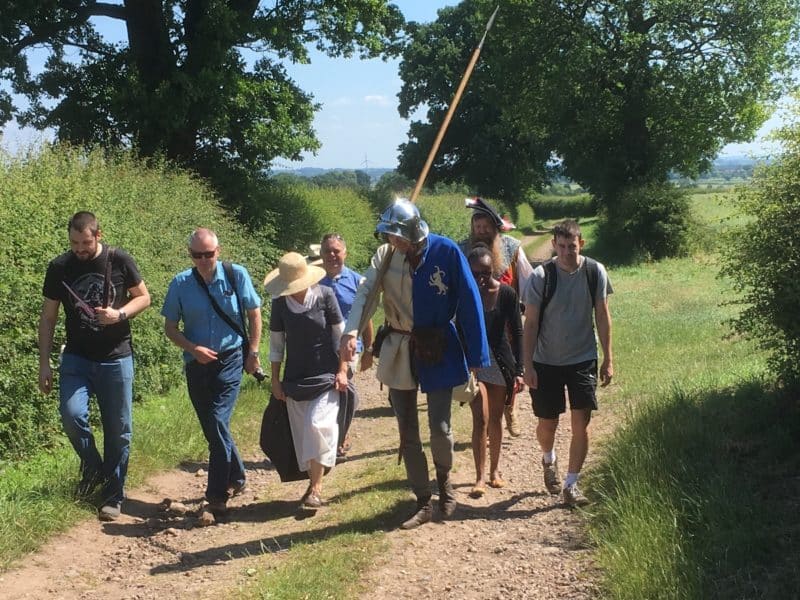
The march to Stokes Field
And so on a very hot Saturday, we set off to walk the Stokes Field battlefield, accompanied by some of the reenactors. It was sweltering just wearing jeans and a T-shirt. Quite how the guys in armour coped I’m not sure but they marched with us! Much of the battlefield is now on privately owned land so I felt privileged to be able to get access to the site. In fairness, you can understand the farmers reluctance to having Joe public trampling his crops but it is a shame that the site is not more accessible to the casual visitor.
That said, there isn’t a great deal to see other than the beautiful countryside. You really needed a guide to help you imagine how the battle was fought
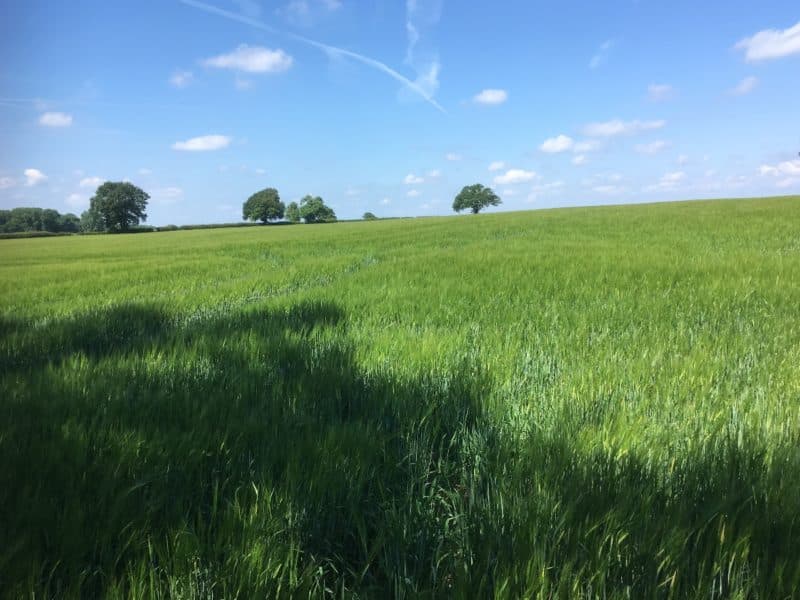
Stokes Field – The Kings men are coming over that hill!

Hold the high ground boys – That’s the old A46 fosse way to the left of the picture.
Having reached the top of the battlefield and surveyed the landscape, we walked back down the hill in the direction of the defeated Rebel army. Our first port of call was the stone that marked where Henry VII planted his standard after the battle.

The stone that marks the place that Henry VII placed his standard.
It was over this field that the rout and pursuit of the rebels took place as they tried to retreat back to the ford over the Trent.

The view towards the Trent – no rebels , just barley.
We made our way back to the Church at East stoke were the following memorial can be found.
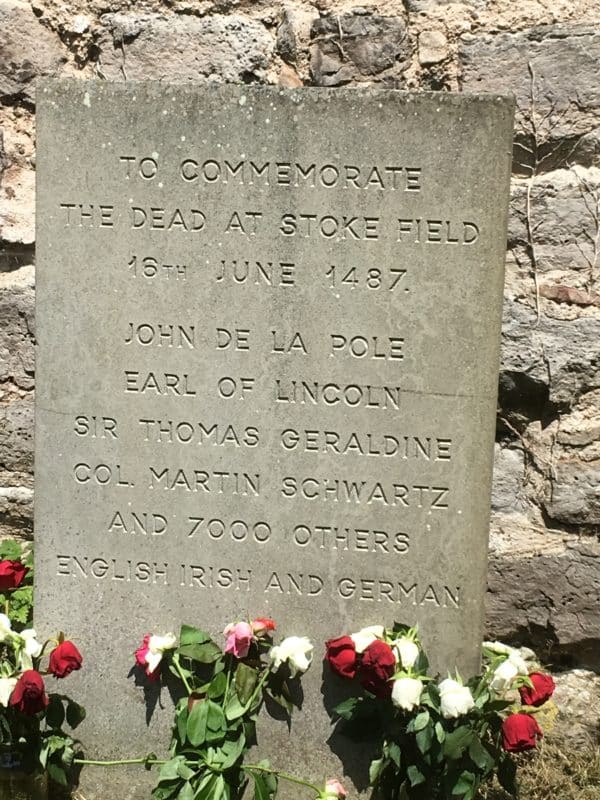
Memorial stone at East stoke Church
As you can see from the inscription, the rebel force comprised of a large contingent of both Irish fighters and German Landsknecht mercenaries as well as the English rebels. They must have made an interesting bunch on which to base a wargaming army. The Irish were very lightly armed in the main, referred to as Kerns, and would have looked somewhat like a Dark ages army. They suffered terribly at the battle from the concentrated archery of the Lancastrian army. The Landsknechts would have cut a colourful sight, in their distinctive costumes. Although armed with pikes and the latest handguns, they too found it difficult to combat the trained archers that they were facing. Indeed, it is said that their bodies were ‘filled with arrows like hedgehogs’. Gunpowder had yet to dominate the battlefield.
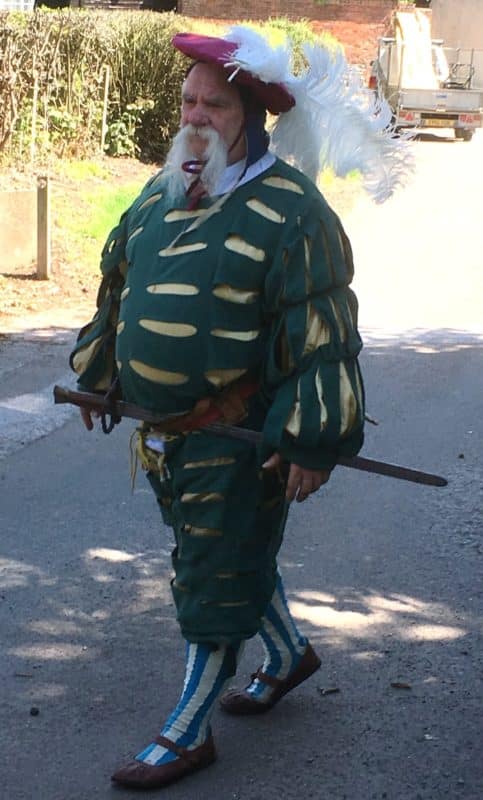
Landsknecht re enactor
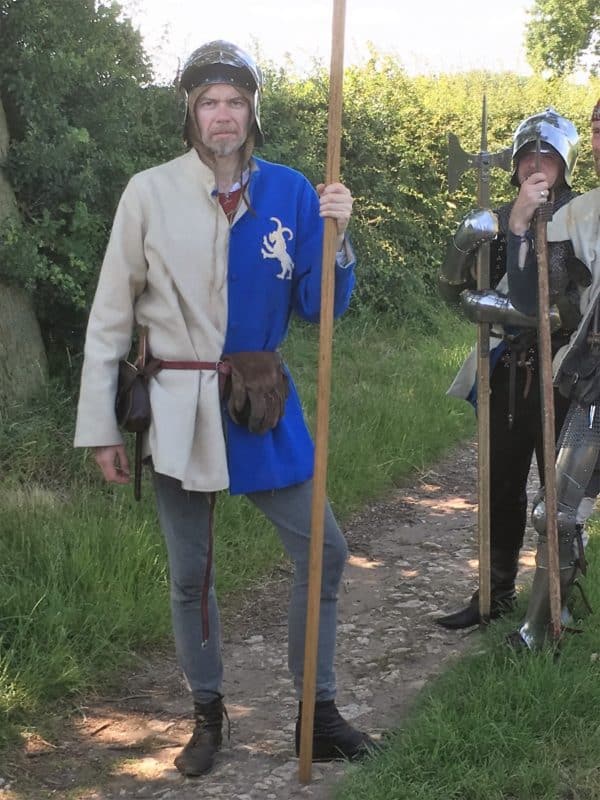
The English Contingent
From East Stoke Church it was a short walk to inspect the ‘Red Gutter’, a cutting that leads down towards the River Trent, where hundreds of rebels stumbled into it and were slaughtered. From there it was back to Foundry HQ for well deserved refreshments. This also gave us an opportunity to take a look at the wargame that had been put on by the ‘Like a Stone Wall’ club.
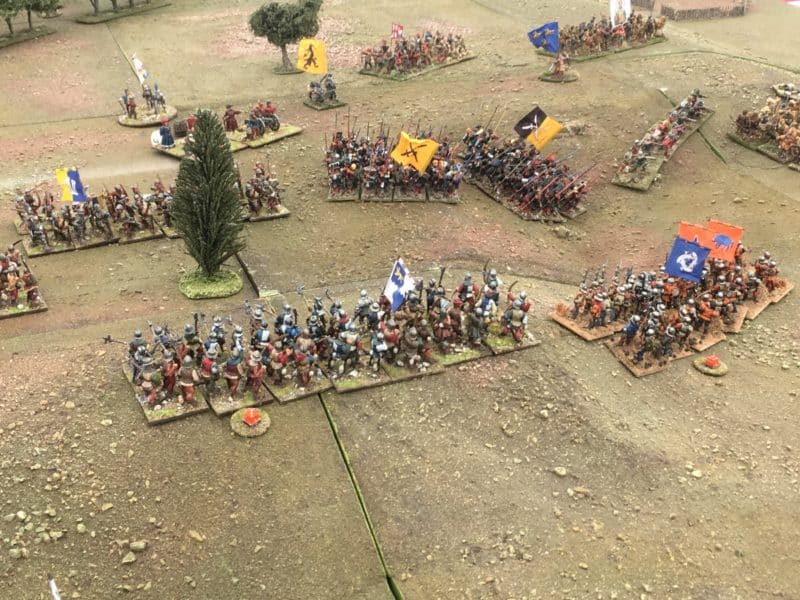
The Battle of Stoke field
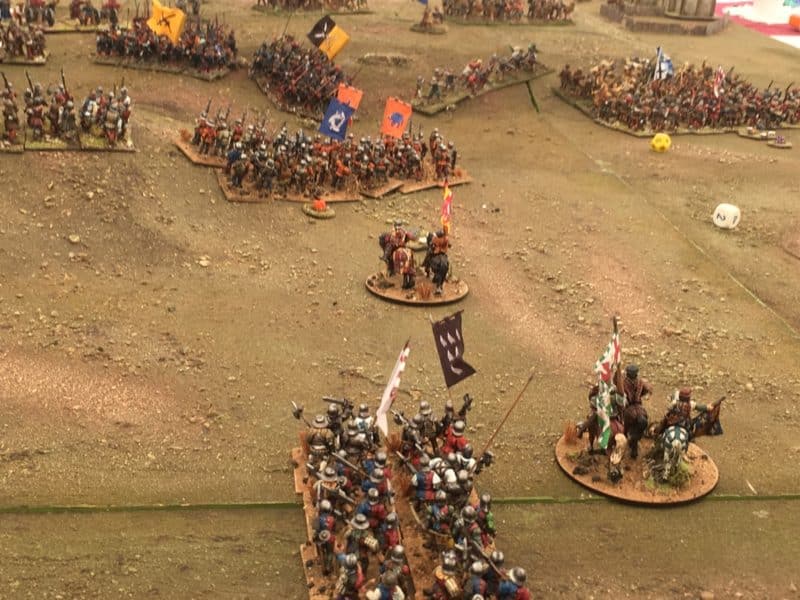
Another view of the action.
We were also able to wander amongst the Reenactors encampment, once again, I found them to be very generous with their time and expertise. Unfortunately, I had run out of charge on my phone so I have no more pictures to show you. A quick walk around the stands at Foundry HQ and it was time to go. I now feel enthused to get on with my War of the Roses Army, so perhaps in between the next Napoleonic unit I’ll paint a few more pikemen.
If you would like to visit the battlefield, you are able to walk around the East Stoke Church and wander down to see the ‘Red Gutter’ and of course, I am sure that the guys at Foundry will be pleased to see you, the shop is open Monday to Saturday, details are here:
WARGAMES FOUNDRY
You wont be able to get to the ridges on which the battle started but you will certainly get the ‘feel’ of the battlefield from the lanes below. I’ve put links to the local TV and Newspaper coverage of the event that might be of interest – it might take a time to load but is worth the wait. I hope that you find the two blogs have been useful – perhaps they will inspire you to have a go at this fascinating period in history.
NOTTS TV NEWS COVERAGE
THE LOCAL PAPER REPORT – NEWARK ADVERTISER
